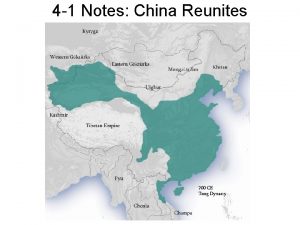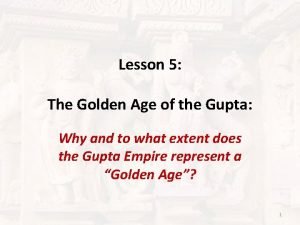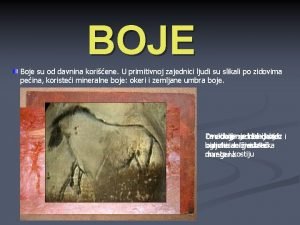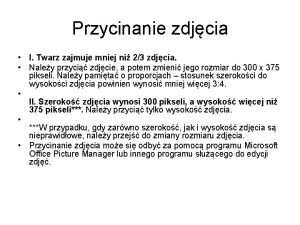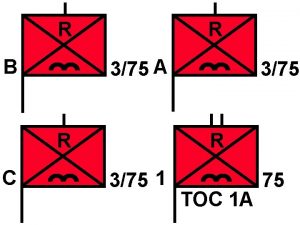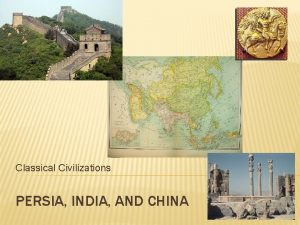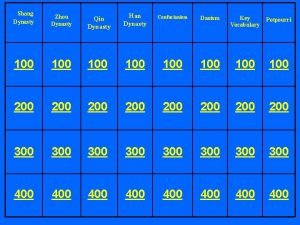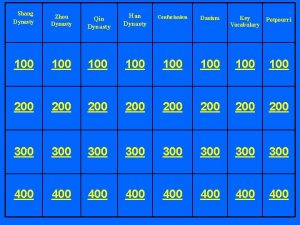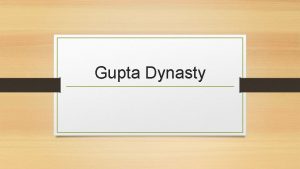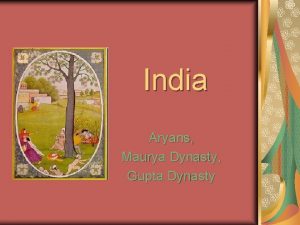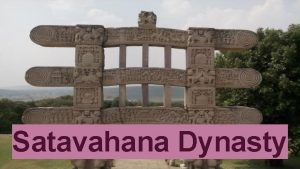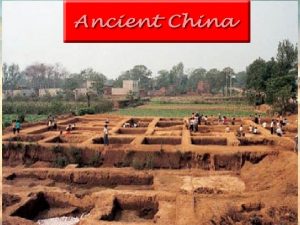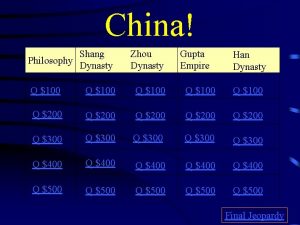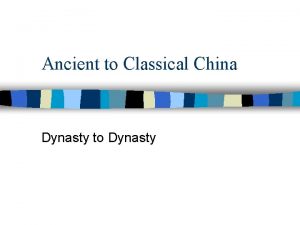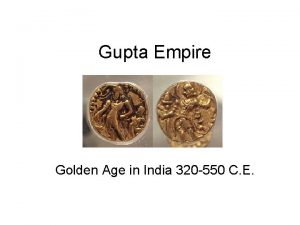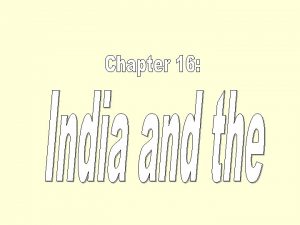Gupta Dynasty ReUnites India Classical India 375 550

















- Slides: 17

Gupta Dynasty Re-Unites India (Classical India) 375 -550 CE • OVERVIEW: • Chandra Gupta founded it • Peaceful • great traders • strong art, science and mathematics • Hinduism dominated • The Gupta have strong central govt which allowed a degree of local control


Politics • Chandra Gupta (320 -335 AD) – Alliances & Conquest – Consolidated Power & Territory – Drove out the Kushans • Samudra Gupta (335 -375 AD) • Chandra Gupta II (375 -415 AD) – Decentralization – Peace & Prosperity (Faxian)


Chandra Gupta I (reigned AD 320 -c. 330), • Pataliputra : Mauryan capital: magnificent palaces, temples, parks • Path to Power – Increased the power and territory of his regional kingdom by marrying Princess Kumaradevi whose family controlled northern India/Nepal. • Other N. Indian territories joined this alliance for protection and trade as his power grew Kumardevi and Chandragupta I 335 -370 ce Gold Dinar

Samudra Gupta (son of Chandra) • launched wars of conquest across N. India • Built a larger Gupta empire • Wealth came from many mines owned by govt

Gupta Economy • owned gold mines, silver mines, and vast lands. • rent money from farmers funded government (govt owned the land) • Silk Road served Gupta, Han, Rome and Persia Dynasties • Indian merchants shipped ivory, jewels, and textiles, salt and iron • The Romans traded glass, jewels, and clothes. • Chinese merchants traded silk, spices, tea, and porcelain. • The Gupta Empire profited greatly from religious trade and religious pilgrims.


Gupta social life • VERY wealthy civilization • enjoyed gardens, music, and daily bathing • ate lots of variety; rice, bread, fish, milk, fruits and juices. • slave labor • Hinduism became more organized & temples became more important. • Women lost rights compared to under Buddhism • Child marriage became common for girls • HINDUSIM returns as dominant religion

Gupta Math/Science • Invented numbers 1 -9, decimal system, pi • Zero invented by Aryabata • Charted planets and star movements • recognized the Earth is round and rotates on its axis and revolves around sun. • Indian physicians excelled in medicines, caesarean section, bone setting, and skin grafting, smallpox vaccination

Gupta Buddhist Art • AJANTA CAVES • depict the stories of Buddhism spanning from the period from 200 bce to 650 ce.


AJANTA CAVES. • During the 4 th century c. e. • Buddhist monasteries and prayer halls. • twenty-nine caves • adorned with elaborate painting and sculptures

Ajanta Caves • The Ajanta caves depict the stories of Buddhism spanning from the period from 200 bce to 650 ce. • The 29 caves were built by Buddhist monks using simple tools like hammer & chisel. • The elaborate and exquisite sculptures and paintings depict stories from Jataka tales. • The caves also house images of nymphs and princesses.

the Sarnath Buddha

Gupta Decline Later Gupta rulers lived extravagantly, which weakened the people’s loyalty. – Guptas weakened by the expense of the War with White Huns and competing India kingdoms

White Huns c. 500 ce invade through Kyber Pass and Ganges Valley • destroyed cities and reduced Hindu temples to rubble. • Feudal provinces declare independence when Gupta are destroyed • India seperates into independent kingdoms. • not unified again until the Muslims in the 11 th century
 Reuniting china
Reuniting china Chronology of gupta dynasty
Chronology of gupta dynasty Umdearborn vpn
Umdearborn vpn Berlinsko plavo
Berlinsko plavo Phys 375
Phys 375 Suku ke-4 barisan geometri adalah 375
Suku ke-4 barisan geometri adalah 375 300 x 375 pikseli
300 x 375 pikseli Ludlum 375
Ludlum 375 Enemy mechanized infantry section symbol
Enemy mechanized infantry section symbol Com(2018) 375 final
Com(2018) 375 final Csc 375
Csc 375 Rm 375-tr-2008
Rm 375-tr-2008 1400-375
1400-375 Post classical india
Post classical india Classical india geography
Classical india geography What is it
What is it Akta 550
Akta 550 Ie 550
Ie 550
